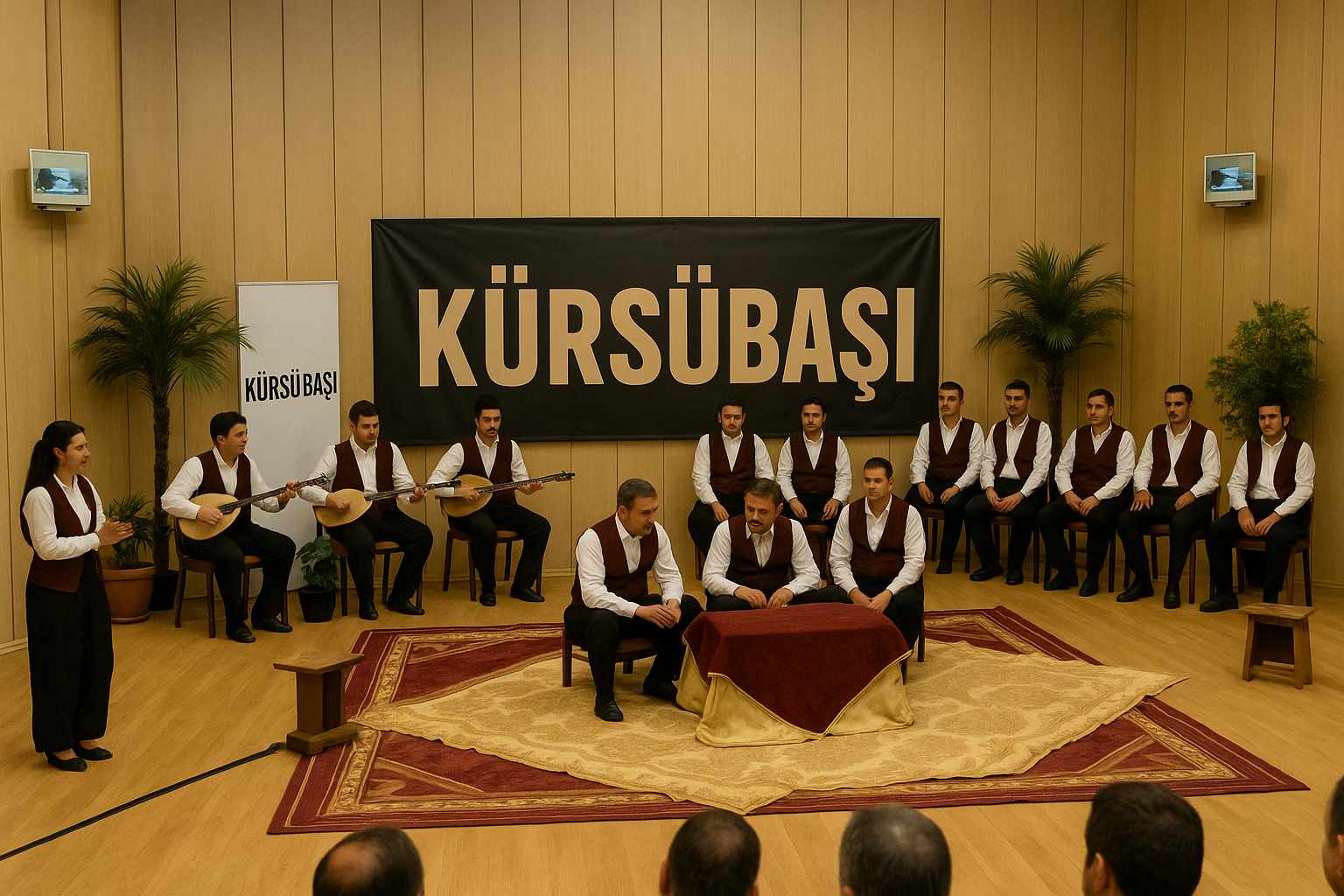The "Kürsübaşı" tradition can be defined as a cultural practice observed particularly in Elazığ and its surrounding areas, where elements of oral folk narratives, music, and conversation come together. This practice offers a space for social interaction, typically during the winter months, in a room or house where individuals gather around a stove or hearth. It serves as a setting in which traditional oral culture elements are transmitted, social communication is maintained, and certain social roles are reinforced. Kürsübaşı gatherings are generally attended by men and feature verbal expression forms such as singing folk songs, storytelling, and sharing riddles and manis (rhymed quatrains).

Kürsübaşı Tradition (Generated by Artificial Intelligence)
Cultural and Social Function
The Kürsübaşı practice is regarded not only as a form of entertainment but also as a learning and sharing environment that enables the intergenerational transmission of oral culture. In this context, the oral expression of narratives and value judgments inherited from previous generations allows younger individuals to become acquainted with social norms, traditional knowledge, and behavioral patterns. The content conveyed during these gatherings includes information on local history, social experiences, elements of folk literature, and moral values.
Historical Development
The historical roots of the Kürsübaşı tradition are traced back to the narrative and assembly culture of Turkic communities in Central Asia. Over time, this practice underwent transformations in response to changing socio-cultural conditions and gained a functional role in the social life of rural and semi-rural communities during the winter months, especially throughout the Ottoman period. In the Harput region and its surroundings, efforts to sustain this tradition as a component of cultural continuity within the context of local identity construction can be observed.
Narrative Forms and Musical Content
The most frequently used narrative forms in Kürsübaşı gatherings are folk tales and epics. These stories are usually presented with the accompaniment of local musical instruments, most commonly the bağlama (locally known as "divan sazı"). Among the tales told are classic folk narratives such as “Aşık Garip,” “Kerem and Aslı,” and “Emrah and Selvi.” Musical performances are delivered within the framework of local melodic structures, often in the forms of uzun hava (free rhythm) and kırık hava (regular rhythm). Additionally, other oral culture elements such as riddles, mani (rhymed couplets), and tongue twisters are also performed during the gatherings.
Meeting Venue and Implementation Method
The gatherings typically take place in rural homes, where individuals convene around a stove or hearth. Seating arrangements are determined based on age hierarchy and the social standing within the group. The narrators and elder individuals are positioned at the head of the room. During the event, a specific order and speaking protocol are observed before taking the floor. In Kürsübaşı settings, adherence to the principles of respect in verbal interaction, attentive listening, and conversational etiquette is among the fundamental rules of practice.
Kürsübaşı Tradition – Elazığ, 1980 (TRT Archive)
Modern Interpretations and Preservation Efforts
Since the second half of the 20th century, a decline has been observed in the visibility of traditional oral culture practices such as Kürsübaşı, due to industrialization, urbanization, and the widespread influence of mass media. Nevertheless, in Elazığ and various other regions, cultural events are organized to preserve and revitalize the Kürsübaşı tradition. In this context, local festivals, cultural nights, and municipal events often feature reenactments of Kürsübaşı gatherings. Additionally, some academic institutions and cultural research centers conduct documentation efforts aimed at preserving this tradition. Kürsübaşı gatherings possess qualities that may be evaluated within the framework of UNESCO's "Intangible Cultural Heritage" criteria.
Literary and Identity Value
The Kürsübaşı tradition offers an environment that supports the preservation of regional dialects, idioms, proverbs, and oral narrative forms. The transmission of stories in local vernacular enables the reproduction of cultural identity through language. In this respect, Kürsübaşı gatherings function as a model of oral transmission that ensures the continuity of the linguistic components of oral culture.

